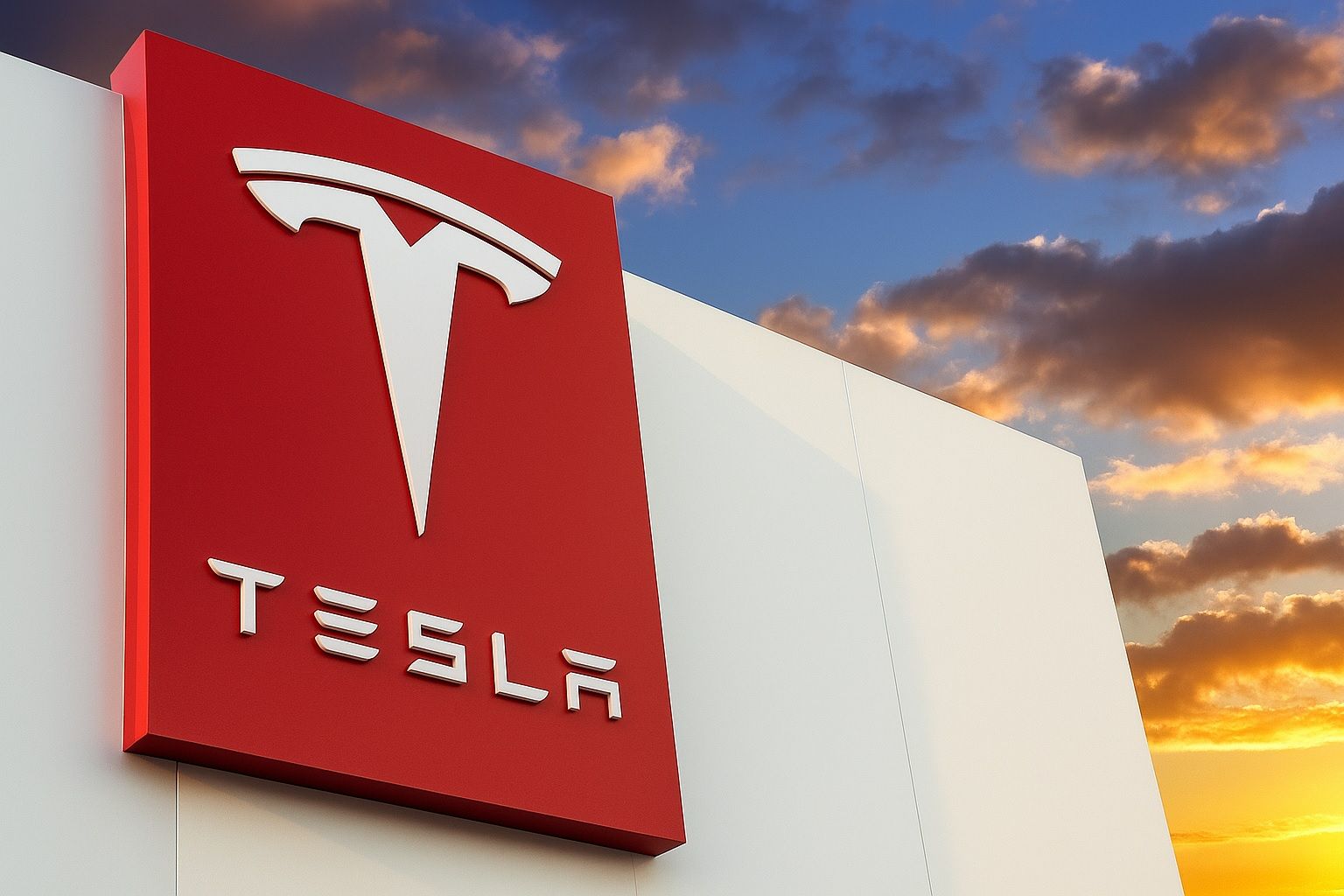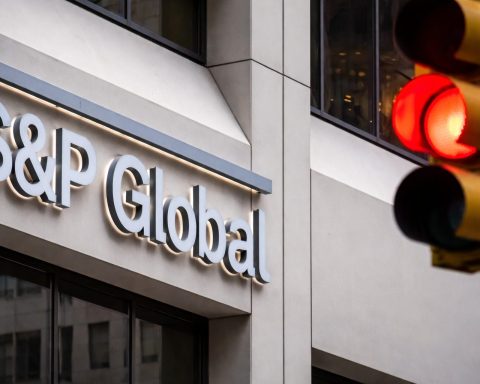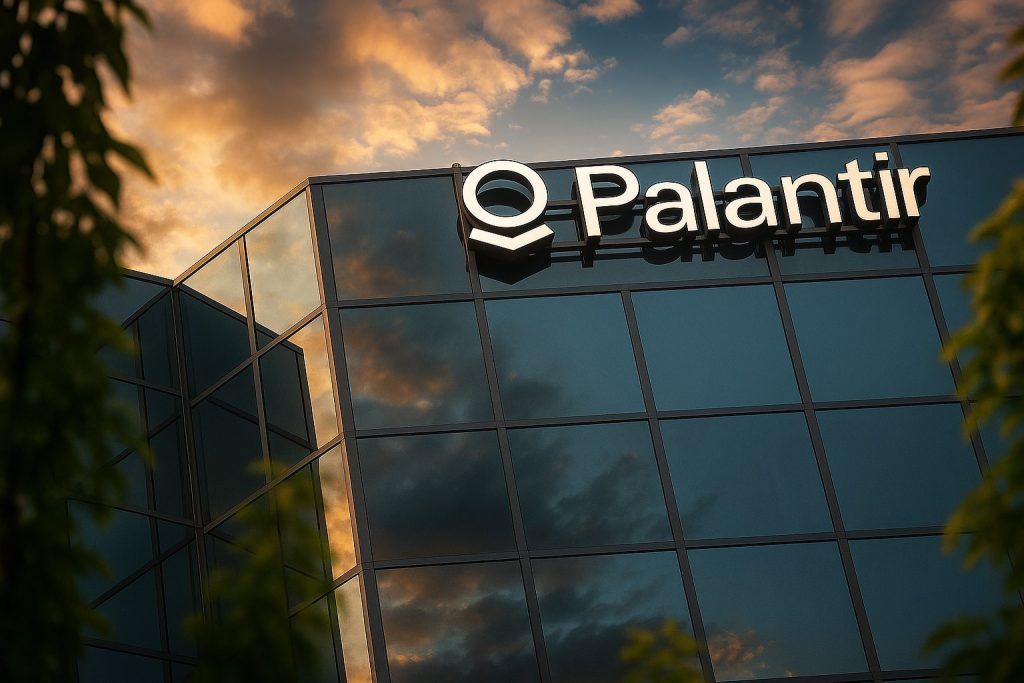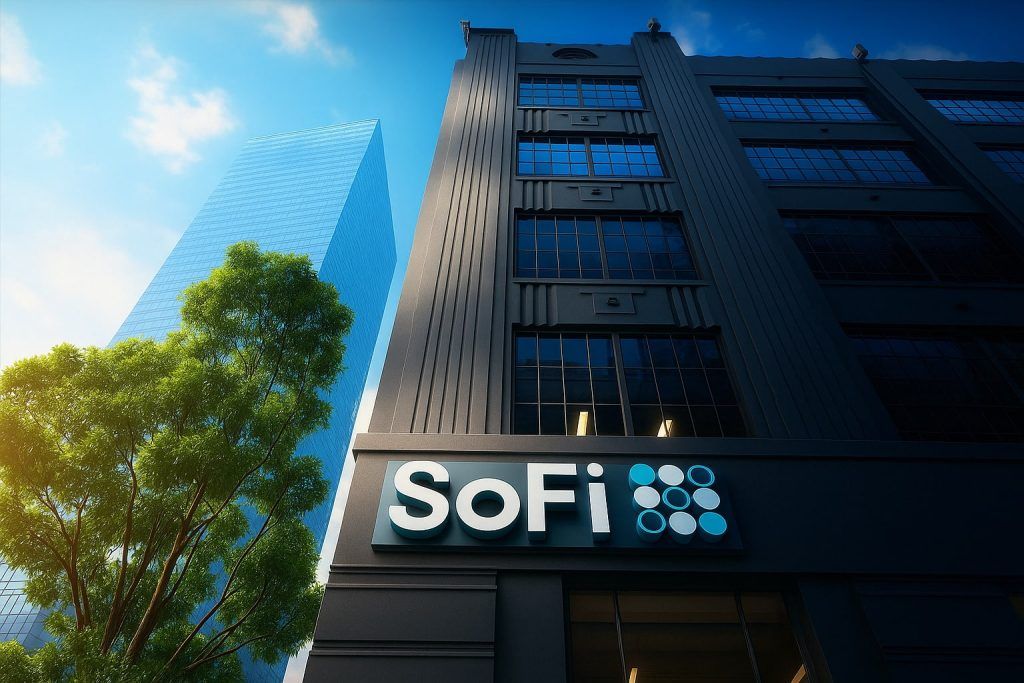Updated November 13, 2025
Tesla stock (NASDAQ: TSLA) spent Thursday trading around the $430 mark after a volatile stretch driven by weak China sales, new Full Self‑Driving (FSD) software releases and fresh headlines around Elon Musk’s huge AI and robotics ambitions.
As of Thursday, Tesla shares are sitting near $430.60, roughly 2% below the prior close and near the bottom of today’s intraday range around $426–$442. That leaves TSLA well off its recent highs but still up strongly over the past year. The stock’s 52‑week range runs from about $214 to $489, with a market cap around $1.4 trillion and a triple‑digit price‑to‑earnings ratio near 280–290, underscoring how much future growth is already priced in. [1]
At the same time, after‑hours quotes on brokerage platform Public show TSLA trading around $428.70 at 8:00 p.m. ET, a touch below the regular‑session level, suggesting only modest additional weakness into the evening. [2]
Below is a breakdown of the key Tesla stock stories for November 13, 2025, and how they tie back to TSLA’s price action.
Tesla stock today: volatile week, rich valuation
Over the last several sessions, Tesla has slipped from the mid‑$460s toward the low‑$430s. Historical data show the stock closing $430.60 on November 12, down just over 2% on volume north of 57 million shares, and extending a pullback from early‑November peaks around the $470s. [3]
Despite that pullback, TSLA has still returned roughly 38% over the past year, with an average daily volume near 58.5 million shares and a 52‑week span that stretches from the low‑$200s to just under $490. [4]
That rally has left Tesla trading at an extremely rich earnings multiple. Data aggregators put TSLA’s trailing P/E ratio in the 230–290 range, depending on the source and exact earnings metric used, far above the broader market. [5]
Translation: even after this week’s dips, today’s $430 share price still reflects huge expectations for future growth in software, robotaxis and humanoid robots, not just electric cars.
China shock: October sales hit a 3‑year low
The most bearish Tesla headline hanging over TSLA today is coming out of China:
- A Barchart analysis noted that Tesla’s China sales fell to about 26,006 vehicles in October, the lowest monthly tally in roughly three years.
- Tesla’s domestic market share in China dropped from 8.7% in September to about 3.2% in October, also a multi‑year low, as local competitors flood the market with cheaper EVs. [6]
Those numbers reinforce worries that the core EV business is under pressure:
- China is the world’s largest EV market.
- Local players like BYD and XPeng are pushing aggressive pricing.
- At the same time, global EV demand growth is slowing, just as government incentives roll off in key regions. [7]
Analysts and commentators warn that Tesla has been cutting prices to maintain volumes, which helps deliveries but squeezes automotive margins. With Q3 margins already trending below many investors’ hopes, today’s China data are a key driver behind the cautious tone around TSLA. [8]
FSD v14 and new software updates keep the AI story alive
While China headlines weigh on the stock, Tesla is pushing hard on its software and AI narrative, and that is front‑and‑center in today’s news:
- EV blog Tesla Oracle reports that Tesla has started rolling out FSD v14.1.7 (firmware 2025.38.8.7) to the Cybertruck and newer HW4‑equipped Model S/3/X/Y vehicles. [9]
- A separate wide deployment of software build 2025.38.9 is going out to HW3 cars and the Cybertruck, even skipping over an intermediate FSD branch — a sign Tesla is iterating quickly on parallel versions of its autonomy stack. [10]
These updates matter for TSLA stock because:
- They help support Tesla’s argument that it is more of an AI and software company than “just” a carmaker.
- FSD subscriptions and one‑time upgrades are a potential high‑margin revenue stream, which could offset thinner margins in hardware over time.
- Progress on FSD is tied directly to Tesla’s Robotaxi roadmap, which many bulls view as a major reason to pay a premium multiple.
Still, the market has heard big autonomy promises from Tesla before. After years of delays and missed robotaxi timelines, investors are increasingly demanding real‑world safety data, regulatory approvals and revenue before re‑rating the stock higher.
Inside Tesla AI: 2026 will be the “hardest year” as Robotaxi and Optimus ramp
A major AI‑side headline today comes from Business Insider, which obtained details from a recent all‑hands meeting for Tesla’s Autopilot and Optimus teams:
- Tesla VP of AI Software Ashok Elluswamy reportedly told staff that 2026 will be the “hardest year” of their lives, reflecting how intense the push will be to deliver on the company’s autonomy and robotics goals. [11]
- Employees were shown aggressive internal timelines:
- Tesla aims to operate a Robotaxi service in 8–10 metropolitan areas by late 2025, with more than 1,000 ride‑hailing vehicles on the road.
- Optimus humanoid robot production is targeted to begin in late 2026, with output ramping sharply thereafter. [12]
Those targets build on what Elon Musk has been telling investors for months:
- Tesla’s Optimus pilot production line, discussed at the annual shareholder meeting, is expected to be capable of producing up to 1 million robots per year once fully ramped, with additional lines at factories like Giga Texas potentially scaling that to tens of millions annually over time. [13]
- Earlier reports and commentary from Zacks and others highlight Tesla’s plan to move from “several thousand” Optimus units in 2025 toward hundreds of thousands of units per year by 2027, positioning robots as a potential new product category as big as, or bigger than, smartphones. [14]
For Tesla stock, today’s AI headlines reinforce the long‑term bull case: if robotaxis and humanoid robots work at scale, TSLA’s current valuation could look cheap in hindsight. But they also amplify execution risk — 2026 is being framed internally as a make‑or‑break year.
Q3 earnings backdrop: record deliveries, weaker profits
Much of today’s trading still reflects investor digestion of Q3 2025 results, released on October 22:
- Tesla reported Q3 revenue of about $28.1 billion, up roughly 12% year‑over‑year. [15]
- Non‑GAAP earnings came in around $0.50 per share, with GAAP EPS near $0.39, missing many analyst estimates and declining from last year as margin pressure and higher costs offset record sales. [16]
- On the operations side, Tesla produced roughly 447,000 vehicles and delivered about 497,000 in Q3, a new quarterly delivery record. Its energy business also hit a high, with around 12.5 GWh of energy storage deployed. [17]
The mixed picture — record volumes, but softer profitability — helps explain why TSLA has struggled to break out despite blockbuster headlines around AI and robots.
Musk’s $1 trillion pay package and shareholder sentiment
Another storyline still echoing into today’s trading is Musk’s massive compensation package:
- At the 2025 annual shareholder meeting earlier this month, more than 75% of votes backed a pay plan that could be worth up to $1 trillion if ambitious milestones around valuation, vehicle sales, robotaxis and robots are met by 2035. [18]
- Tesla chair Robyn Denholm framed the vote as an “overwhelming” show of confidence in Musk and in Tesla’s AI‑heavy “Master Plan Part IV” vision. [19]
Markets, however, have been more conflicted:
- In the session immediately following the vote, Tesla shares fell around 3–4%, with broader tech weakness and concerns about governance and valuation cited as factors. [20]
Today, that pay package is still part of the TSLA risk‑reward discussion. Bulls see it as aligning Musk more deeply with long‑term value creation in AI and robotics. Critics worry it concentrates power and encourages very high‑risk, all‑in bets.
Institutional buying, insider selling and analyst targets
Fresh filings and articles published today shine a light on who is buying and selling TSLA:
- A MarketBeat report shows Better Money Decisions LLC initiated a new position of 2,486 Tesla shares in Q2, valued at about $790,000, while noting that institutional investors in aggregate own roughly 66.2% of Tesla’s float. [21]
- Another MarketBeat note out today highlights Allianz SE increasing its Tesla holdings by around 3.8% to 105,959 shares, worth about $33.7 million. [22]
- A separate piece cites D Orazio & Associates boosting its stake by over 23% to nearly 5,900 shares, reinforcing the theme that a variety of funds have been quietly adding TSLA exposure. [23]
On the flip side, insider activity has tilted bearish:
- Recent filings highlighted by MarketBeat show Director James Murdoch selling around 60,000 shares and SVP Xiaotong Zhu selling 20,000 shares, part of roughly 202,606 Tesla shares insiders have sold over the last three months — transactions totaling in the neighborhood of $75 million. Insiders still hold close to 20% of the company. [24]
Analysts remain sharply divided:
- MarketBeat’s Tesla forecast page pins the average Wall Street 12‑month price target around $391, below today’s $430 level, with an overall “Hold” consensus. [25]
- A deeper survey from 24/7 Wall St finds price targets ranging from as low as ~$19 to as high as $600, with a median near $395.50 and a split of Buys, Holds and Sells that underscores how controversial the stock remains. [26]
- Separate coverage notes that Wedbush’s Dan Ives recently lifted his bullish price target to $600, the highest on the Street, on expectations that Tesla could reach a $2–3 trillion market cap if AI, robotaxis and Optimus scale as planned.
In short, smart money is not all on one side: some institutions are adding, insiders are trimming, and analysts are spread across the spectrum from “sell” to “this thing might triple.”
Slowing EV demand, higher rates and macro headwinds
Beyond Tesla‑specific news, the macro backdrop is noisy:
- The longest U.S. government shutdown in history just ended this week after 43 days, with markets breathing a temporary sigh of relief but already eyeing the next funding deadline in early 2026. [27]
- Broader U.S. stock futures traded mixed today as investors weighed the shutdown’s economic impact, interest‑rate uncertainty and renewed caution in high‑growth tech. [28]
Against that backdrop, research from outlets like Traders Union and Barron’s — cited in today’s commentary — flags a cooling global EV growth rate, waning subsidies and higher interest rates as structural headwinds for Tesla’s vehicle business. Their base‑case scenario sees TSLA potentially trading in a $400–$480 range over the next few months, with downside toward the mid‑$300s if EV demand or margins deteriorate further. [29]
Bull vs. bear view on Tesla stock after today’s news
What the bulls see:
- Record deliveries and growing energy storage volumes underpin a still‑scaling industrial business. [30]
- Rapid FSD v14 rollouts and robotaxi tests in multiple U.S. states point to meaningful software and subscription revenue upside if regulators cooperate. [31]
- The Optimus humanoid robot and AI initiatives could unlock entirely new trillion‑dollar markets, justifying today’s lofty valuation if Tesla executes. [32]
- Influential bulls like Wedbush and several growth managers believe TSLA could become a multi‑trillion‑dollar AI platform, not just an automaker. [33]
What the bears focus on:
- China weakness is not a one‑off; October’s three‑year‑low sales and market‑share drop could foreshadow further erosion in Tesla’s most important overseas market. [34]
- Margins are under strain from price cuts, rising costs and more competition, just as higher interest rates make big‑ticket purchases harder and compress the valuations of growth stocks. [35]
- Tesla’s valuation already bakes in years of flawless execution on FSD, robotaxis and robots — projects with long timelines, heavy capex needs and uncertain regulatory pathways. [36]
- Governance and concentration of power — exemplified by the $1 trillion pay package and Musk’s insistence on increasing his stake to control a future “robot army” — add non‑trivial risk if strategy or public sentiment turn. [37]
Put simply: today’s $430 share price sits at the intersection of genuine operational strength and very stretched expectations.
What to watch next for TSLA
Looking beyond today’s tape, here are the next key catalysts Tesla stock watchers will track:
- Additional China data for November and December
Any stabilization — or further deterioration — in Chinese sales and market share will be crucial for the 2026 outlook. [38] - Robotaxi and FSD regulatory progress
Investors will watch how quickly Tesla can expand paid robotaxi services beyond early markets like Texas and Arizona, and whether regulators in big states such as California give the green light for broader deployments. [39] - Optimus pilot line execution
Updates on the Fremont Optimus line and concrete customer pilots will help investors decide whether Tesla’s robot vision is science fiction or a serious near‑term business. [40] - Next earnings report – January 28, 2026 (expected)
Calendars from multiple data providers point to late January 2026 as the next confirmed Tesla earnings call, where management will update guidance and discuss margins, AI investments and robotaxi progress. [41] - Macro and interest‑rate moves
With the government shutdown drama only temporarily resolved and rate expectations still in flux, any shifts in macro sentiment will disproportionately affect high‑valuation names like Tesla. [42]
Important: This article is for informational purposes only and does not constitute financial advice or a recommendation to buy or sell any security. Always do your own research or consult a licensed financial adviser before making investment decisions.
References
1. www.investing.com, 2. public.com, 3. stockanalysis.com, 4. www.investing.com, 5. seekingalpha.com, 6. www.barchart.com, 7. tradersunion.com, 8. tradersunion.com, 9. www.teslaoracle.com, 10. www.teslaoracle.com, 11. www.businessinsider.com, 12. www.businessinsider.com, 13. www.teslarati.com, 14. www.zacks.com, 15. www.teslarati.com, 16. www.teslarati.com, 17. www.stocktitan.net, 18. www.businessinsider.com, 19. www.teslarati.com, 20. www.wsj.com, 21. www.marketbeat.com, 22. www.marketbeat.com, 23. www.marketbeat.com, 24. www.marketbeat.com, 25. www.marketbeat.com, 26. 247wallst.com, 27. fortune.com, 28. www.wsj.com, 29. tradersunion.com, 30. www.stocktitan.net, 31. www.teslaoracle.com, 32. www.teslarati.com, 33. www.investors.com, 34. www.barchart.com, 35. tradersunion.com, 36. 247wallst.com, 37. www.akronlegalnews.com, 38. www.barchart.com, 39. www.reuters.com, 40. www.teslarati.com, 41. finance.yahoo.com, 42. fortune.com







